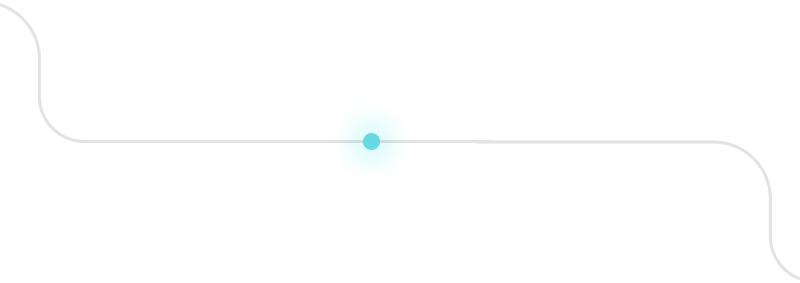Story by Emily Hopcian
Photography by Sofía Mejía Llamas
In San Carlos de Bariloche, Argentina in Northern Patagonia, Lau Nitzsche is known for her talent for seamlessly and uniquely blending art, music, and nature, as well as her ability to take what's old and make it fashionably new. Though I've known Lau for a few years, it wasn't until recently that I learned where her knack for giving old gear a chance to be taken on new adventures comes from. It turns out, the answer goes back to her childhood.
 Lau hikes near Cerro Catedral—with Lago Gutierrez and Cerro Ventana in the background—in Bariloche.
Lau hikes near Cerro Catedral—with Lago Gutierrez and Cerro Ventana in the background—in Bariloche.
I first met Lau in her studio—a relatively small, ground-level space in Bariloche—in 2019. It was winter in the Southern Hemisphere, and Lau was hosting two friends for an evening of music and photography.
That evening and in the visits that followed, I took in the details of Lau’s studio. I love how artist studios often feel like museums—an ode to each artist, their process, and their art. Lau’s was no different.
On the primary wall, a collage of color swatches, fabrics, measuring tape, photos, and sketches hung haphazardly with clothespins from a wire grid. The photos and sketches reflected outdoor scenes: a condor looming over the Andes Mountains, a photo of a local mountain hut with a design printed over it. On the windowsill sat a few succulents and a miniature dinosaur, dressed in buttons and sequins. A shopping cart that had been converted into a chair rested in a corner of the room near a bicycle.
 Lau Nitzsche's studio in San Carlos de Bariloche, Argentina.
Lau Nitzsche's studio in San Carlos de Bariloche, Argentina.
Meeting someone in their “making space” feels like quite a good way to understand who they are. Exploration, both in creativity and the outdoors, surrounds Lau. She is not only a designer and an entrepreneur, but an athlete with a passion for snowboarding, splitboarding, mountain biking, road cycling, and more adventures.
Today, Lau has relocated her studio to the space next to her father’s bicycle workshop. While working alongside his shop is new, Lau’s dad and his work have influenced her since she was a little girl.
 Among Patagonia's wilderness, Lau finds artistic inspiration and athletic motivation.
Among Patagonia's wilderness, Lau finds artistic inspiration and athletic motivation.
Making the most of what you have
Working with one’s hands and adventure run in Lau’s family. Her mother is an English teacher, translator, and biologist with a deep love of nature. Lau’s father, Miguel, is a bicycle mechanic and musician who has bikepacked throughout the Americas and Europe, often camping and couch surfing en route.
 Lau hikes through Valle del Campanile using a backpack she made from upcycled material.
Lau hikes through Valle del Campanile using a backpack she made from upcycled material.
Throughout Lau’s childhood, Miguel’s bicycle workshop was positioned next to the family’s house. “As a little girl, I spent a lot of time there with him, wanting to help, lending a hand where I could,” she says. “I later realized it was a trick to entertain me, but it was also fulfilling.”
From an early age, Lau learned the value of fixing things and using something as much as possible before opting to buy new.
To this day, Miguel seeks ways to utilize used bicycle parts in repairs before compromising for a new part. “If I go to him with my bike and say, ‘I think I have to change the pedals,’ he tells me, ‘No, wait. We’re going to disassemble everything, clean all of it, and put it back together,’” Lau says. Nine times out of 10, it works.
Beyond the bike shop, Miguel has always been artistic. At home, when it came to art projects, Lau’s family would recycle materials to make papier mâché, cardboard houses, games, and more. Lau says this was likely due in part to her family’s socioeconomic situation—or that of Argentina as a whole—as well as to the fact that her parents are “people who just don’t consume very much.”
So in addition to passing on a thrifty ethic, Lau’s parents also instilled in her the desire to create art.
 Lau screenprints her design onto a tank top in her studio in Bariloche.
Lau screenprints her design onto a tank top in her studio in Bariloche.
A natural entrepreneur
When she was 13 years old, Lau longed to join her friends at the local ski resort. Though she had a snowboard and her brother’s old boots (that were too big for her), her parents couldn’t afford to buy her a pass.
So she started turning sketches from her notebook into hand-painted designs on t-shirts and selling them. With her profits, she bought a ski pass and joined her friends on the mountain.
 Lau works on a watercolor in the Andes Mountains of Northern Patagonia.
Lau works on a watercolor in the Andes Mountains of Northern Patagonia.
At the Universidad Nacional de La Plata in Argentina, where Lau studied cinematography, photography, and visual arts, her professors encouraged her to use upcycled and recycled materials. “Since many of us were studying there with little money, we had to make do with what there was,” Lau remembers. “You’d be walking down the street, and say, ‘Look, this works for me. I’ll complete the assignment with this.’”
After graduating and back in Bariloche, Lau’s experience finding materials to recycle in art came in handy. When the pandemic hit and sourcing material became nearly impossible, Lau searched her home for clothing and gear she was no longer using to make new clothing and gear.
To start, she made 10 backpacks and sold them to family, friends, and community members. The response was positive, so Lau kept going.
 One of Lau's original upcycled backpacks. (Photo by Lau Nitzsche)
One of Lau's original upcycled backpacks. (Photo by Lau Nitzsche)
Upcycling used gear for new adventures
Word got out around the community about Lau’s ability to turn old stuff into something new, and used material started coming her way. A friend showed up one day with an old paraglider from the ‘80s with vibrant colors and ribbons. With it, Lau created backpacks, fanny packs, and fleece pullovers.
 A collection of Lau's fanny packs made using upcycled material from an old paraglider from the ‘80s.
A collection of Lau's fanny packs made using upcycled material from an old paraglider from the ‘80s.
Family and friends would write to her or show up at her studio and say, “Dude, Lau, I have this tent that I’m no longer using. Can you use the material?”
“People don’t like throwing used items away in the trash,” she says.
Somewhere along the way, Lau formed Impala Taller, her design studio. Today, she combines art, design, nature, and sports to generate unique products. She makes backpacks, fanny packs, hoodies, pullovers, and t-shirts. As a graphic designer, she has collaborated with Banff Centre Mountain Film and Book Festival, BUFF, Rab, TENKI Patagonia, and more.
 Lau tests a backpack she made on an adventure on Cerro Capilla near Bariloche.
Lau tests a backpack she made on an adventure on Cerro Capilla near Bariloche.
Through Impala, Lau collaborates with local artists, uses local labor, and upcycles used outdoor clothing and gear—such as paragliders, sailboat sails, jackets, tents, kitesurfing and windsurfing materials, and more—to create products that are inspired by and, in turn, inspire a life outdoors.
One norm of the traditional fashion industry that Lau challenges is the notion that you need a collection of clothing every season. Although Patagonia has four distinct seasons, Lau has found that winter clothes are not that different from summer clothes—it’s the layering that’s key. “You wear a hoodie, a t-shirt, and a backpack all year-round,” she says. For that reason, why complicate what you make and sell?
Like her dad, Lau enjoys what she makes—and she enjoys the outdoor spaces where her creations are designed to be used.
“Today, I am more linked to nature through sport than anything else,” she says. “On the one hand, it’s good for me spiritually to go out and do a sport in the mountains. On the other hand, and more related to Impala, the type of products I make are increasingly linked to experiencing nature in this way.”
 In her studio, Lau arranges t-shirts of her original design—a mix of photography and graphic design that she screenprints onto the fabric.
In her studio, Lau arranges t-shirts of her original design—a mix of photography and graphic design that she screenprints onto the fabric.
To anyone looking to strike out on their own and embrace an entrepreneurial journey, Lau has this advice: “It’s a difficult road at times. You have to have a lot of energy and perseverance, but it also has a lot of satisfaction and well being. You have to have faith in what you do and how you do it. When you have faith, sooner or later, things start to flow. They start to happen.”
The annual cycle of seasons moves Lau, personally and professionally. With each new season, there’s a turnover of used gear to create from and new outdoor adventures to pursue. Between her studio and the immense outdoor landscapes that surround the space in which she lives and creates, Lau has found a flow. In business and in life, she is in a constant cycle of being inspired by her time outside and, through what she creates, inspiring others to get outside. Exploration yields ideation and creation—and with each new season, Lau cycles forward.

Based between Northern Michigan and Patagonia, Emily Hopcian is a writer, editor, and content producer with a focus on character-driven stories of outdoor adventure and social and environmental impact. Follow along @emilyhopcian
Follow Lau on Instagram at @launitzsche. Follow her studio, Impala Taller, on Instagram at @impalataller. View Impala’s products (currently available in Argentina and listed in Argentine pesos) at impalataller.com.


















